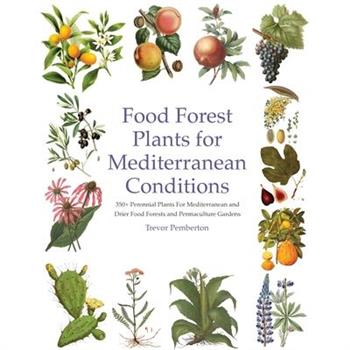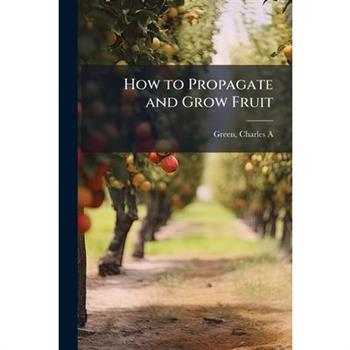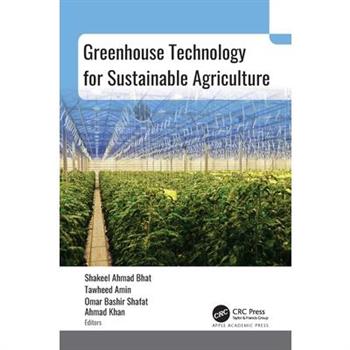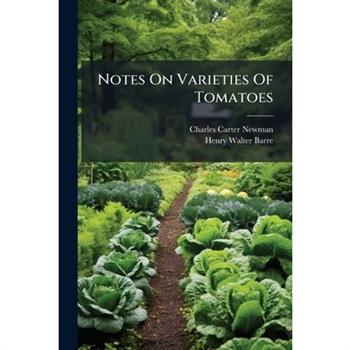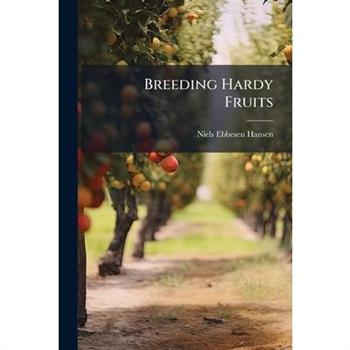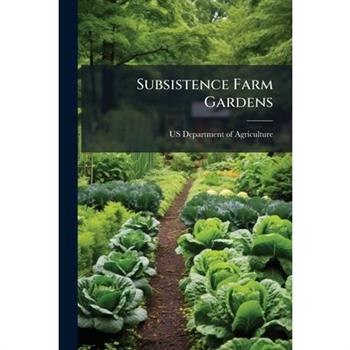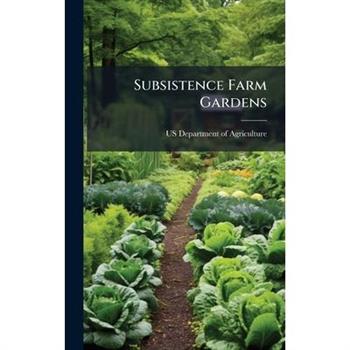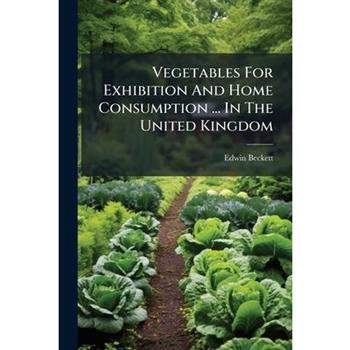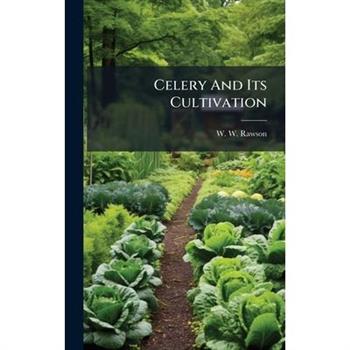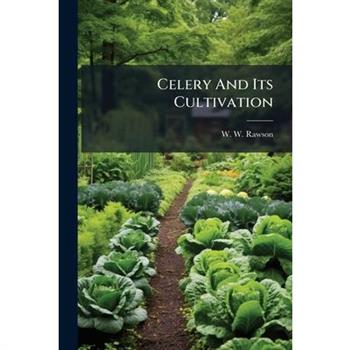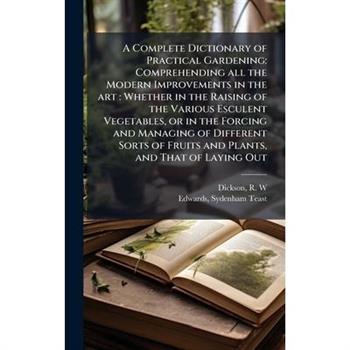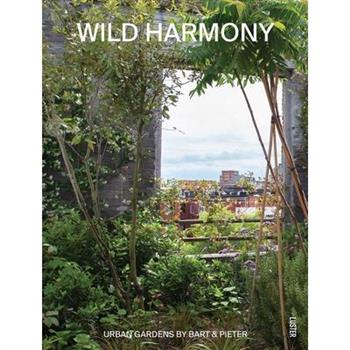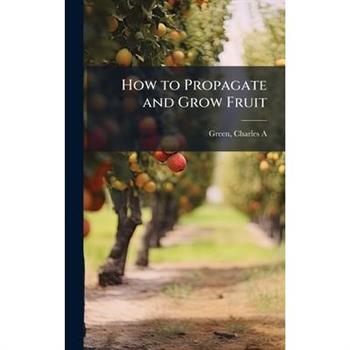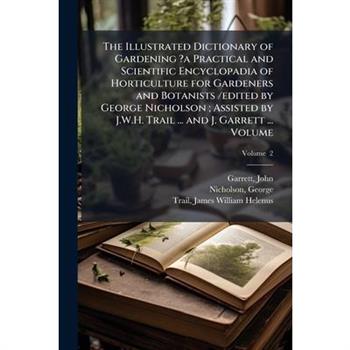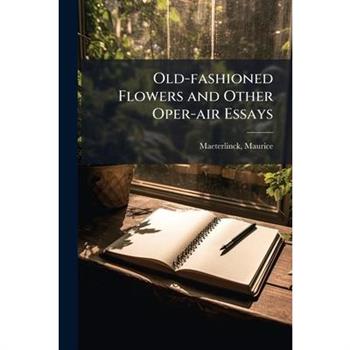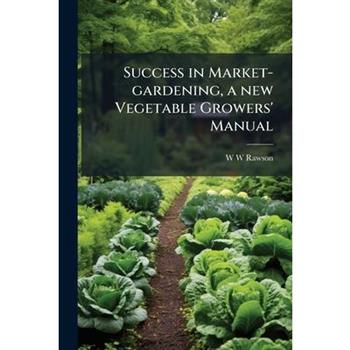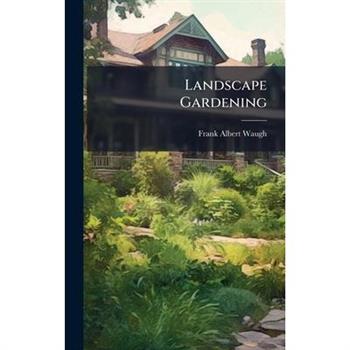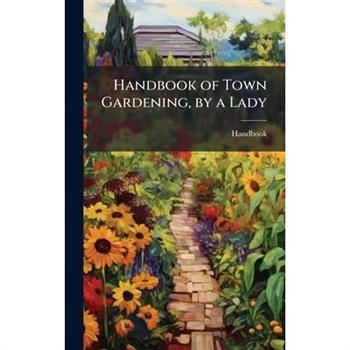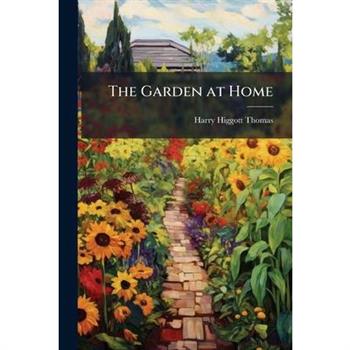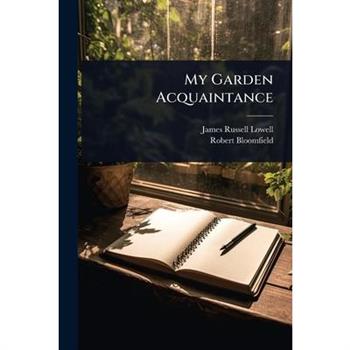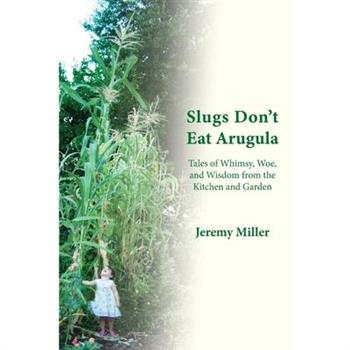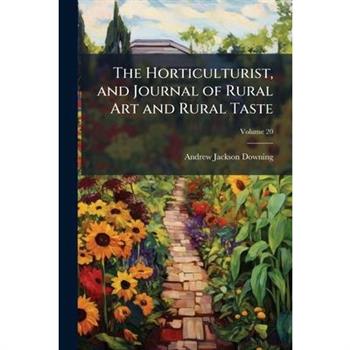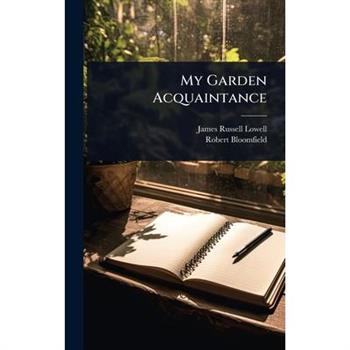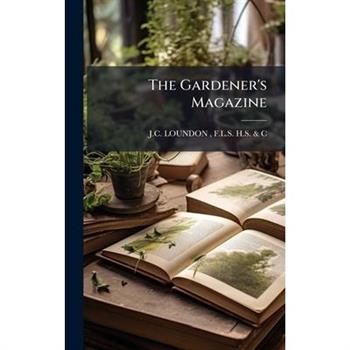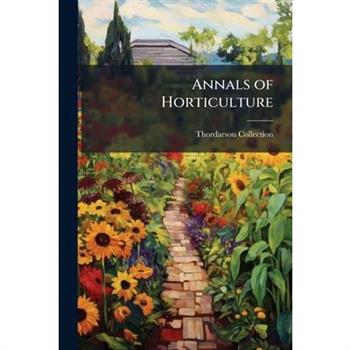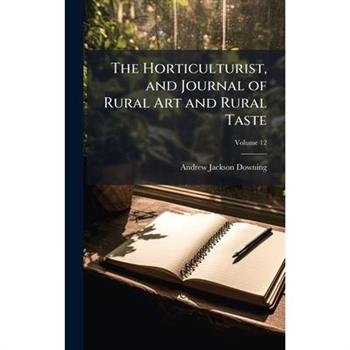Food Forest Plants for Mediterranean Conditions
This is the third in Plants For A Future's acclaimed series of plant guides for food forests tailored to specific climate zones. Following volumes on temperate and tropical ecosystems, this book focuses on species suited to Mediterranean conditions-regions with hot, dry summers and cool, wet winters, often facing the added challenge of climate change.Whether you're designing a food forest in southern Europe, California, parts of South Africa, Australia, or the Middle East, this book offers a carefully researched selection of plants that can thrive and contribute to diverse, productive ecosystems. You'll find details on what parts of each plant are edible, how and when to harvest, how long it takes trees to bear fruit or nuts, and how these species can improve soil health, fix nitrogen, attract beneficial wildlife, or act as ecological pioneers.Drawn from the renowned PFAF plant database and supplemented by research into active permaculture projects across Mediterranean zones, this book is an essential tool for anyone cultivating sustainable food systems in challenging dryland conditions. Some featured plants may surprise you-less edible, but key to restoring degraded land and creating a healthy foundation for future yields.Discover how the right plants, chosen for the right climate, can regenerate landscapes and nourish communities-season after season.
How to Propagate and Grow Fruit
Discover the secrets to successful fruit propagation and cultivation with Charles A. Green's classic guide, "How to Propagate and Grow Fruit." This comprehensive handbook, originally published in 1885, offers timeless advice and practical techniques for both novice and experienced gardeners. Learn the art of grafting, budding, and other methods to multiply your favorite fruit varieties. With detailed instructions and helpful illustrations, Green provides invaluable insights into creating thriving orchards and ensuring bountiful harvests. Whether you're interested in apples, pears, peaches, or berries, this book is a treasure trove of knowledge passed down through generations of fruit growers. Unlock the potential of your garden and enjoy the fruits of your labor with this essential guide to fruit propagation.This work has been selected by scholars as being culturally important, and is part of the knowledge base of civilization as we know it. This work was reproduced from the original artifact, and remains as true to the original work as possible. Therefore, you will see the original copyright references, library stamps (as most of these works have been housed in our most important libraries around the world), and other notations in the work.This work is in the public domain in the United States of America, and possibly other nations. Within the United States, you may freely copy and distribute this work, as no entity (individual or corporate) has a copyright on the body of the work.As a reproduction of a historical artifact, this work may contain missing or blurred pages, poor pictures, errant marks, etc. Scholars believe, and we concur, that this work is important enough to be preserved, reproduced, and made generally available to the public. We appreciate your support of the preservation process, and thank you for being an important part of keeping this knowledge alive and relevant.
The Art of Herbal Healing
The Art of Herbal Healing is a comprehensive reference containing a wealth of information, step-by-step instructions, and colored illustrations enabling safe and responsible use of medicinal herbs to heal and promote vibrant health.Susan Clearwater presents a dynamic "hands-on" exploration into the amazing world of herbalism, empowering readers to interact with medicinal plants at whatever level you choose -- from gardening, harvesting, and creating herbal teas and other preparations to learning which herbs are helpful for specific conditions.Highlighting the holistic perspective and wisdom in healing the whole person, medicinal herbs are examined through a broad-spectrum lens, beginning with their uses and mythology in ancient cultures to modern scientific research with identification of their chemical components. A comprehensive study of 50 herbs in the Materia Medica includes their medicinal uses, cultivation, preparation of remedies for internal and external healing, dosages, and safety precautions.
Greenhouse Technology for Sustainable Agriculture
Providing an integrated approach to crop growth and development and the technical aspects of greenhouse cultivation and climate management, this new volume focuses on the sustainable elements of greenhouse technology that are currently available on the market. The book examines the most major issues in this dynamic and developing field that calls for innovative multidisciplinary scientific and technological solutions. The advanced greenhouse technology and topics covered in this book include an emphasis on sustainable agriculture; greenhouse design, installation and maintenance; irrigation and fertigation techniques for greenhouses; automation and control technologies; cooling and ventilation technologies; insect and pest management; organic greenhouse practices; economic feasibility of greenhouse technology under certain conditions and more.
Field and Woodland Plants
Uncover the enchanting world of nature with "Field and Woodland Plants," a timeless guide that has been out of print for decades and is now beautifully republished by Alpha Editions. This exquisite edition has been meticulously restored for today s and future generations, making it not just a reprint but a collector s item and a cultural treasure. Dive into the pages of this captivating book, where you will explore the rich diversity of field and woodland plants, perfect for both the casual reader and the classic literature collector. With a focus on plant identification, this guide serves as an essential resource for nature study, offering invaluable insights into native plants and sustainable gardening practices. Whether you are a budding botanist or simply seeking gardening tips, this book is your gateway to ecological awareness and the wonders of the natural world. "Field and Woodland Plants" is more than just a guide; it s a journey through the beauty of wildflowers and the secrets of herbal remedies. Embrace the thrill of outdoor education and reconnect with nature in a way that inspires and enlightens. Don t miss your chance to own this unique literary gem experience the magic of the great outdoors, one plant at a time!
Notes On Varieties Of Tomatoes
"Notes On Varieties Of Tomatoes" is a comprehensive guide dedicated to the diverse world of tomatoes. Authored by Charles Carter Newman and Henry Walter Barre, this book delves into the characteristics, cultivation, and unique aspects of various tomato varieties. It offers valuable insights for gardeners, agricultural enthusiasts, and anyone interested in botany.Explore detailed descriptions of different tomato types, understand their specific growing requirements, and discover the nuances that set them apart. Whether you are a seasoned farmer or a home gardener, this book provides practical knowledge and a deeper appreciation for the science behind these popular fruits.This work has been selected by scholars as being culturally important, and is part of the knowledge base of civilization as we know it. This work was reproduced from the original artifact, and remains as true to the original work as possible. Therefore, you will see the original copyright references, library stamps (as most of these works have been housed in our most important libraries around the world), and other notations in the work.This work is in the public domain in the United States of America, and possibly other nations. Within the United States, you may freely copy and distribute this work, as no entity (individual or corporate) has a copyright on the body of the work.As a reproduction of a historical artifact, this work may contain missing or blurred pages, poor pictures, errant marks, etc. Scholars believe, and we concur, that this work is important enough to be preserved, reproduced, and made generally available to the public. We appreciate your support of the preservation process, and thank you for being an important part of keeping this knowledge alive and relevant.
Breeding Hardy Fruits
Breeding Hardy Fruits, by Niels Ebbesen Hansen, explores the principles and practices of developing fruit varieties that can thrive in challenging climates. This comprehensive guide delves into the techniques of cross-pollination, selection, and propagation, offering practical advice for both amateur and professional breeders. Hansen's insights into the genetic traits that contribute to hardiness provide invaluable knowledge for those seeking to cultivate resilient and productive orchards. With detailed instructions and clear explanations, this book serves as an essential resource for anyone interested in expanding the range of fruit cultivation in colder regions. Discover how to create new and improved fruit varieties capable of withstanding harsh conditions and providing abundant yields. This work has been selected by scholars as being culturally important, and is part of the knowledge base of civilization as we know it. This work was reproduced from the original artifact, and remains as true to the original work as possible. Therefore, you will see the original copyright references, library stamps (as most of these works have been housed in our most important libraries around the world), and other notations in the work.This work is in the public domain in the United States of America, and possibly other nations. Within the United States, you may freely copy and distribute this work, as no entity (individual or corporate) has a copyright on the body of the work.As a reproduction of a historical artifact, this work may contain missing or blurred pages, poor pictures, errant marks, etc. Scholars believe, and we concur, that this work is important enough to be preserved, reproduced, and made generally available to the public. We appreciate your support of the preservation process, and thank you for being an important part of keeping this knowledge alive and relevant.
Subsistence Farm Gardens
This document is part of the United States Department of Agriculture's OrganicRoots Collection. Organic Roots is a collection of the historic United StatesDepartment of Agriculture. The collection contains publications related to organicagriculture. The collection contains documents published before 1942 (beforesynthetic chemicals became widely used) that contain state-of-the-art informationand data that is still very pertinent for today's agriculture.This work has been selected by scholars as being culturally important, and is part of the knowledge base of civilization as we know it. This work was reproduced from the original artifact, and remains as true to the original work as possible. Therefore, you will see the original copyright references, library stamps (as most of these works have been housed in our most important libraries around the world), and other notations in the work.This work is in the public domain in the United States of America, and possibly other nations. Within the United States, you may freely copy and distribute this work, as no entity (individual or corporate) has a copyright on the body of the work.As a reproduction of a historical artifact, this work may contain missing or blurred pages, poor pictures, errant marks, etc. Scholars believe, and we concur, that this work is important enough to be preserved, reproduced, and made generally available to the public. We appreciate your support of the preservation process, and thank you for being an important part of keeping this knowledge alive and relevant.
The Southwest Native Plant Primer
From Arizona's leading native plant organization, this accessible and colorful guide to planting natives will help gardeners at every level of experience add beneficial pollinators to their home gardens. The Southwest Native Plant Primer introduces 235 wildflowers, grasses, vines, cacti, and trees recommended for gardeners of any skill level interested in choosing native plants for a garden that makes a positive environmental impact. It covers a broad area including New Mexico, Arizona, and the southern portions of Utah and Colorado. Though there are vast differences between locations within this region there are also surprising commonalities that this book will highlight. As the Southwest grows in population, but water becomes perilously scarce, this book focuses on the role that native plants and water-wise planting can have in fostering sustainability for all life in the region. In doing so The Southwest Native Plant Primer fills an important gap in literature about gardening in the region, serving as a resource to new and old gardeners alike, providing up to date information about current best practices for gardening in the Southwest.
Subsistence Farm Gardens
This document is part of the United States Department of Agriculture's OrganicRoots Collection. Organic Roots is a collection of the historic United StatesDepartment of Agriculture. The collection contains publications related to organicagriculture. The collection contains documents published before 1942 (beforesynthetic chemicals became widely used) that contain state-of-the-art informationand data that is still very pertinent for today's agriculture.This work has been selected by scholars as being culturally important, and is part of the knowledge base of civilization as we know it. This work was reproduced from the original artifact, and remains as true to the original work as possible. Therefore, you will see the original copyright references, library stamps (as most of these works have been housed in our most important libraries around the world), and other notations in the work.This work is in the public domain in the United States of America, and possibly other nations. Within the United States, you may freely copy and distribute this work, as no entity (individual or corporate) has a copyright on the body of the work.As a reproduction of a historical artifact, this work may contain missing or blurred pages, poor pictures, errant marks, etc. Scholars believe, and we concur, that this work is important enough to be preserved, reproduced, and made generally available to the public. We appreciate your support of the preservation process, and thank you for being an important part of keeping this knowledge alive and relevant.
Vegetables For Exhibition And Home Consumption ... In The United Kingdom
Vegetables For Exhibition And Home Consumption by Edwin Beckett is a comprehensive guide to vegetable cultivation, with a particular focus on preparing produce for exhibition. Originally published in the early 20th century, this book offers detailed instructions on every aspect of vegetable growing, from soil preparation and seed selection to pest control and harvesting. While especially useful for those interested in competitive gardening, the book also provides invaluable advice for home gardeners looking to improve the quality and yield of their crops. Beckett's expertise shines through in his clear, practical advice and meticulous attention to detail. This classic work is a must-read for anyone passionate about vegetable gardening and the art of producing prize-winning vegetables.This work has been selected by scholars as being culturally important, and is part of the knowledge base of civilization as we know it. This work was reproduced from the original artifact, and remains as true to the original work as possible. Therefore, you will see the original copyright references, library stamps (as most of these works have been housed in our most important libraries around the world), and other notations in the work.This work is in the public domain in the United States of America, and possibly other nations. Within the United States, you may freely copy and distribute this work, as no entity (individual or corporate) has a copyright on the body of the work.As a reproduction of a historical artifact, this work may contain missing or blurred pages, poor pictures, errant marks, etc. Scholars believe, and we concur, that this work is important enough to be preserved, reproduced, and made generally available to the public. We appreciate your support of the preservation process, and thank you for being an important part of keeping this knowledge alive and relevant.
Celery And Its Cultivation
"Celery And Its Cultivation" is a practical guide by W. W. Rawson, detailing the methods and techniques for successfully growing celery. This book covers all aspects of celery cultivation, from soil preparation and planting to harvesting and storage. Readers will find valuable information on selecting the right varieties, managing pests and diseases, and optimizing growing conditions for a bountiful crop. Whether you're a seasoned farmer or a home gardener, this book provides essential insights into the art and science of celery farming.This work has been selected by scholars as being culturally important, and is part of the knowledge base of civilization as we know it. This work was reproduced from the original artifact, and remains as true to the original work as possible. Therefore, you will see the original copyright references, library stamps (as most of these works have been housed in our most important libraries around the world), and other notations in the work.This work is in the public domain in the United States of America, and possibly other nations. Within the United States, you may freely copy and distribute this work, as no entity (individual or corporate) has a copyright on the body of the work.As a reproduction of a historical artifact, this work may contain missing or blurred pages, poor pictures, errant marks, etc. Scholars believe, and we concur, that this work is important enough to be preserved, reproduced, and made generally available to the public. We appreciate your support of the preservation process, and thank you for being an important part of keeping this knowledge alive and relevant.
Celery And Its Cultivation
"Celery And Its Cultivation" is a practical guide by W. W. Rawson, detailing the methods and techniques for successfully growing celery. This book covers all aspects of celery cultivation, from soil preparation and planting to harvesting and storage. Readers will find valuable information on selecting the right varieties, managing pests and diseases, and optimizing growing conditions for a bountiful crop. Whether you're a seasoned farmer or a home gardener, this book provides essential insights into the art and science of celery farming.This work has been selected by scholars as being culturally important, and is part of the knowledge base of civilization as we know it. This work was reproduced from the original artifact, and remains as true to the original work as possible. Therefore, you will see the original copyright references, library stamps (as most of these works have been housed in our most important libraries around the world), and other notations in the work.This work is in the public domain in the United States of America, and possibly other nations. Within the United States, you may freely copy and distribute this work, as no entity (individual or corporate) has a copyright on the body of the work.As a reproduction of a historical artifact, this work may contain missing or blurred pages, poor pictures, errant marks, etc. Scholars believe, and we concur, that this work is important enough to be preserved, reproduced, and made generally available to the public. We appreciate your support of the preservation process, and thank you for being an important part of keeping this knowledge alive and relevant.
A Complete Dictionary of Practical Gardening
"A Complete Dictionary of Practical Gardening" by R.W. Dickson and Sydenham Teast Edwards, published in 1806, is a comprehensive guide to the gardening practices of the era. This dictionary encompasses a wide range of horticultural knowledge, detailing the cultivation of various vegetables, the forcing and management of fruits and plants, and the artful laying out of gardens.Providing insight into the modern improvements of the time, this book serves as a valuable resource for understanding historical gardening techniques and the evolution of horticultural practices. It offers practical advice and detailed instructions, making it a fascinating read for both gardening enthusiasts and those interested in the history of agriculture.This work has been selected by scholars as being culturally important, and is part of the knowledge base of civilization as we know it. This work was reproduced from the original artifact, and remains as true to the original work as possible. Therefore, you will see the original copyright references, library stamps (as most of these works have been housed in our most important libraries around the world), and other notations in the work.This work is in the public domain in the United States of America, and possibly other nations. Within the United States, you may freely copy and distribute this work, as no entity (individual or corporate) has a copyright on the body of the work.As a reproduction of a historical artifact, this work may contain missing or blurred pages, poor pictures, errant marks, etc. Scholars believe, and we concur, that this work is important enough to be preserved, reproduced, and made generally available to the public. We appreciate your support of the preservation process, and thank you for being an important part of keeping this knowledge alive and relevant.
Wild Harmony
This photographic overview of the beautifully wild gardens by the Belgium-based 'green guerillas' Bart Haverkamp and Pieter Croes will inspire gardeners everywhere to let nature take the lead. Green is the new black according to Belgium-based garden architects Bart Haverkamp and Pieter Croes. It's been more than 30 years now since they turned their love for nature into a business. During this time, they've completed countless and diverse garden projects, built up an enormous amount of experience and expanded their knowledge. Their method and philosophy evolved accordingly, resulting into their sought-after signature style. Their gardens - many of them on small plots, terraces or rooftops in the city - are anything but clean and fixed: rough outlines and plant selections are made beforehand, but they trust their intuition to make spontaneous decisions on the spot. In this carefully curated and thoughtfully designed photo book, Bart and Pieter reflect on their work. Their aim is to share their vision and experience and to inspire all gardeners by showing how much is possible when you're willing to let nature take its course. In this book, Bart and Pieter put their philosophy into words, as an introduction to 20 extensive and inspiring photo reports of their favorite or most important garden projects so far. The third part of the book holds short descriptions of these projects and useful advice on, for example, how to make your garden heat-resistant.
The Accidental Garden
One of Britain's greatest nature writers blends horticulture with philosophy in this intimate memoir about gardening, rewilding, and a path forward amid climate change. What is a garden? Is it an arena for the display of human mastery or might it be something less determined, more generous? These are questions that Richard Mabey, arguably England's greatest nature writer, considers in his new book, The Accidental Garden. From the pressing surrounds of the inventive, half-wild garden that Mabey, an instinctive rewilder, and his partner Polly, a determined grower, have shared for two decades, Mabey weighs past hopes and visions against the environmental emergency of the present. In beeches and bush crickets he sees proof of adaptation and survival; in commons and meadows he finds natural processes still at work. A wise and witty stylist, Mabey locates in his small patch of the planet a place to test assumptions and to observe how myriad species establish common ground.
Gardening For The Ignorant
Embark on a horticultural adventure with "Gardening For The Ignorant," a timeless guide designed to empower novices and inspire seasoned gardeners alike. Co-authored by Mrs. C. W. Earle and Ethel Case, this book demystifies the art of gardening, offering practical advice and time-tested techniques for cultivating thriving gardens. Whether you aspire to grow vibrant flowers, bountiful vegetables, or simply create a serene outdoor space, this book equips you with the knowledge and confidence to succeed. Discover the joys of nurturing plants from seed to bloom, learn essential tips for soil preparation and maintenance, and unlock the secrets to creating a flourishing garden. "Gardening For The Ignorant" is more than just a gardening manual; it is a celebration of nature's beauty and the rewarding experience of connecting with the earth.This work has been selected by scholars as being culturally important, and is part of the knowledge base of civilization as we know it. This work was reproduced from the original artifact, and remains as true to the original work as possible. Therefore, you will see the original copyright references, library stamps (as most of these works have been housed in our most important libraries around the world), and other notations in the work.This work is in the public domain in the United States of America, and possibly other nations. Within the United States, you may freely copy and distribute this work, as no entity (individual or corporate) has a copyright on the body of the work.As a reproduction of a historical artifact, this work may contain missing or blurred pages, poor pictures, errant marks, etc. Scholars believe, and we concur, that this work is important enough to be preserved, reproduced, and made generally available to the public. We appreciate your support of the preservation process, and thank you for being an important part of keeping this knowledge alive and relevant.
Gardening For The Ignorant
Embark on a horticultural adventure with "Gardening For The Ignorant," a timeless guide designed to empower novices and inspire seasoned gardeners alike. Co-authored by Mrs. C. W. Earle and Ethel Case, this book demystifies the art of gardening, offering practical advice and time-tested techniques for cultivating thriving gardens. Whether you aspire to grow vibrant flowers, bountiful vegetables, or simply create a serene outdoor space, this book equips you with the knowledge and confidence to succeed. Discover the joys of nurturing plants from seed to bloom, learn essential tips for soil preparation and maintenance, and unlock the secrets to creating a flourishing garden. "Gardening For The Ignorant" is more than just a gardening manual; it is a celebration of nature's beauty and the rewarding experience of connecting with the earth.This work has been selected by scholars as being culturally important, and is part of the knowledge base of civilization as we know it. This work was reproduced from the original artifact, and remains as true to the original work as possible. Therefore, you will see the original copyright references, library stamps (as most of these works have been housed in our most important libraries around the world), and other notations in the work.This work is in the public domain in the United States of America, and possibly other nations. Within the United States, you may freely copy and distribute this work, as no entity (individual or corporate) has a copyright on the body of the work.As a reproduction of a historical artifact, this work may contain missing or blurred pages, poor pictures, errant marks, etc. Scholars believe, and we concur, that this work is important enough to be preserved, reproduced, and made generally available to the public. We appreciate your support of the preservation process, and thank you for being an important part of keeping this knowledge alive and relevant.
How to Propagate and Grow Fruit
Discover the secrets to successful fruit propagation and cultivation with Charles A. Green's classic guide, "How to Propagate and Grow Fruit." This comprehensive handbook, originally published in 1885, offers timeless advice and practical techniques for both novice and experienced gardeners. Learn the art of grafting, budding, and other methods to multiply your favorite fruit varieties. With detailed instructions and helpful illustrations, Green provides invaluable insights into creating thriving orchards and ensuring bountiful harvests. Whether you're interested in apples, pears, peaches, or berries, this book is a treasure trove of knowledge passed down through generations of fruit growers. Unlock the potential of your garden and enjoy the fruits of your labor with this essential guide to fruit propagation.This work has been selected by scholars as being culturally important, and is part of the knowledge base of civilization as we know it. This work was reproduced from the original artifact, and remains as true to the original work as possible. Therefore, you will see the original copyright references, library stamps (as most of these works have been housed in our most important libraries around the world), and other notations in the work.This work is in the public domain in the United States of America, and possibly other nations. Within the United States, you may freely copy and distribute this work, as no entity (individual or corporate) has a copyright on the body of the work.As a reproduction of a historical artifact, this work may contain missing or blurred pages, poor pictures, errant marks, etc. Scholars believe, and we concur, that this work is important enough to be preserved, reproduced, and made generally available to the public. We appreciate your support of the preservation process, and thank you for being an important part of keeping this knowledge alive and relevant.
Handbook Of Hardy Trees And Shrubs
Delve into the essential guide for cultivating hardy trees and shrubs with George Bunyard's "Handbook Of Hardy Trees And Shrubs". This book serves as a comprehensive resource for identifying and growing a wide variety of park trees, evergreens, flowering shrubs, and ornamental trees. Complete with cultural hints and illustrations, this handbook equips gardeners and nature enthusiasts with the knowledge to enhance their landscapes. Whether you're an experienced horticulturalist or a budding gardener, this handbook offers practical insights into selecting and caring for the most resilient and visually appealing trees and shrubs. Discover the secrets to creating vibrant, thriving outdoor spaces with guidance from a seasoned expert.This work has been selected by scholars as being culturally important, and is part of the knowledge base of civilization as we know it. This work was reproduced from the original artifact, and remains as true to the original work as possible. Therefore, you will see the original copyright references, library stamps (as most of these works have been housed in our most important libraries around the world), and other notations in the work.This work is in the public domain in the United States of America, and possibly other nations. Within the United States, you may freely copy and distribute this work, as no entity (individual or corporate) has a copyright on the body of the work.As a reproduction of a historical artifact, this work may contain missing or blurred pages, poor pictures, errant marks, etc. Scholars believe, and we concur, that this work is important enough to be preserved, reproduced, and made generally available to the public. We appreciate your support of the preservation process, and thank you for being an important part of keeping this knowledge alive and relevant.
The Illustrated Dictionary of Gardening ?a Practical and Scientific Encyclopadia of Horticulture for Gardeners and Botanists /edited by George Nicholson; Assisted by J.W.H. Trail ... and J. Garrett ..
"The Illustrated Dictionary of Gardening" is a comprehensive encyclop?]dia of horticulture, offering practical and scientific knowledge for gardeners and botanists alike. Edited by George Nicholson, and assisted by J.W.H. Trail and J. Garrett, this volume (Volume 2) provides detailed entries and illustrations covering a wide range of gardening topics. Originally published in 1884, this historical reference work reflects the gardening practices and botanical understanding of the Victorian era. Its enduring value lies in its detailed descriptions and historical insights into the world of gardening and botany. This edition offers a fascinating glimpse into the horticultural practices of the past.This work has been selected by scholars as being culturally important, and is part of the knowledge base of civilization as we know it. This work was reproduced from the original artifact, and remains as true to the original work as possible. Therefore, you will see the original copyright references, library stamps (as most of these works have been housed in our most important libraries around the world), and other notations in the work.This work is in the public domain in the United States of America, and possibly other nations. Within the United States, you may freely copy and distribute this work, as no entity (individual or corporate) has a copyright on the body of the work.As a reproduction of a historical artifact, this work may contain missing or blurred pages, poor pictures, errant marks, etc. Scholars believe, and we concur, that this work is important enough to be preserved, reproduced, and made generally available to the public. We appreciate your support of the preservation process, and thank you for being an important part of keeping this knowledge alive and relevant.
Vegetables for the Home Garden
Vegetables for the Home Garden, originally published in 1915, is a timeless guide to cultivating a thriving vegetable patch. Authored by the renowned W. Atlee Burpee Company, this book offers practical advice for both novice and experienced gardeners. Discover time-tested techniques for planting, nurturing, and harvesting a wide variety of vegetables. This classic manual provides detailed instructions on soil preparation, seed selection, and pest control, ensuring a bountiful harvest. With a focus on sustainable practices and efficient gardening methods, Vegetables for the Home Garden remains an invaluable resource for anyone seeking to grow their own fresh, healthy produce. Explore the wisdom of a bygone era and cultivate a garden that flourishes with nature's bounty. This work has been selected by scholars as being culturally important, and is part of the knowledge base of civilization as we know it. This work was reproduced from the original artifact, and remains as true to the original work as possible. Therefore, you will see the original copyright references, library stamps (as most of these works have been housed in our most important libraries around the world), and other notations in the work.This work is in the public domain in the United States of America, and possibly other nations. Within the United States, you may freely copy and distribute this work, as no entity (individual or corporate) has a copyright on the body of the work.As a reproduction of a historical artifact, this work may contain missing or blurred pages, poor pictures, errant marks, etc. Scholars believe, and we concur, that this work is important enough to be preserved, reproduced, and made generally available to the public. We appreciate your support of the preservation process, and thank you for being an important part of keeping this knowledge alive and relevant.
Handbook Of Hardy Trees And Shrubs
Delve into the essential guide for cultivating hardy trees and shrubs with George Bunyard's "Handbook Of Hardy Trees And Shrubs". This book serves as a comprehensive resource for identifying and growing a wide variety of park trees, evergreens, flowering shrubs, and ornamental trees. Complete with cultural hints and illustrations, this handbook equips gardeners and nature enthusiasts with the knowledge to enhance their landscapes. Whether you're an experienced horticulturalist or a budding gardener, this handbook offers practical insights into selecting and caring for the most resilient and visually appealing trees and shrubs. Discover the secrets to creating vibrant, thriving outdoor spaces with guidance from a seasoned expert.This work has been selected by scholars as being culturally important, and is part of the knowledge base of civilization as we know it. This work was reproduced from the original artifact, and remains as true to the original work as possible. Therefore, you will see the original copyright references, library stamps (as most of these works have been housed in our most important libraries around the world), and other notations in the work.This work is in the public domain in the United States of America, and possibly other nations. Within the United States, you may freely copy and distribute this work, as no entity (individual or corporate) has a copyright on the body of the work.As a reproduction of a historical artifact, this work may contain missing or blurred pages, poor pictures, errant marks, etc. Scholars believe, and we concur, that this work is important enough to be preserved, reproduced, and made generally available to the public. We appreciate your support of the preservation process, and thank you for being an important part of keeping this knowledge alive and relevant.
Old-fashioned Flowers and Other Oper-air Essays
"Old-fashioned Flowers and Other Open-air Essays" is a collection of reflective essays by Maurice Maeterlinck, the Nobel Prize-winning Belgian playwright, poet, and essayist. Published in 1906, these essays showcase Maeterlinck's deep appreciation for the natural world, particularly the beauty and symbolism found in flowers and gardens. Maeterlinck's writing blends keen observation with philosophical musings, inviting readers to contemplate the hidden wonders of the everyday. His lyrical prose and insightful reflections on nature offer a timeless perspective, appealing to those who appreciate both the art of gardening and the beauty of thoughtful contemplation. A classic of early 20th-century nature writing, this collection invites readers to rediscover the simple joys of the natural world.This work has been selected by scholars as being culturally important, and is part of the knowledge base of civilization as we know it. This work was reproduced from the original artifact, and remains as true to the original work as possible. Therefore, you will see the original copyright references, library stamps (as most of these works have been housed in our most important libraries around the world), and other notations in the work.This work is in the public domain in the United States of America, and possibly other nations. Within the United States, you may freely copy and distribute this work, as no entity (individual or corporate) has a copyright on the body of the work.As a reproduction of a historical artifact, this work may contain missing or blurred pages, poor pictures, errant marks, etc. Scholars believe, and we concur, that this work is important enough to be preserved, reproduced, and made generally available to the public. We appreciate your support of the preservation process, and thank you for being an important part of keeping this knowledge alive and relevant.
The Vegetable Garden
"The Vegetable Garden" by Ralph L. Watts, originally published in 1917, is a comprehensive guide to cultivating a thriving home vegetable garden. This practical manual covers all aspects of vegetable gardening, from selecting the right site and preparing the soil to planting, cultivating, and harvesting a wide variety of vegetables. Watts provides detailed instructions on soil management, fertilization, and irrigation, ensuring that readers understand the fundamental principles of successful gardening. He offers insights into pest and disease control, helping gardeners protect their crops and maximize their yields. Whether you're a novice gardener or an experienced green thumb, "The Vegetable Garden" offers valuable knowledge and time-tested techniques for creating a productive and bountiful garden.This work has been selected by scholars as being culturally important, and is part of the knowledge base of civilization as we know it. This work was reproduced from the original artifact, and remains as true to the original work as possible. Therefore, you will see the original copyright references, library stamps (as most of these works have been housed in our most important libraries around the world), and other notations in the work.This work is in the public domain in the United States of America, and possibly other nations. Within the United States, you may freely copy and distribute this work, as no entity (individual or corporate) has a copyright on the body of the work.As a reproduction of a historical artifact, this work may contain missing or blurred pages, poor pictures, errant marks, etc. Scholars believe, and we concur, that this work is important enough to be preserved, reproduced, and made generally available to the public. We appreciate your support of the preservation process, and thank you for being an important part of keeping this knowledge alive and relevant.
Vegetables for the Home Garden
Vegetables for the Home Garden, originally published in 1915, is a timeless guide to cultivating a thriving vegetable patch. Authored by the renowned W. Atlee Burpee Company, this book offers practical advice for both novice and experienced gardeners. Discover time-tested techniques for planting, nurturing, and harvesting a wide variety of vegetables. This classic manual provides detailed instructions on soil preparation, seed selection, and pest control, ensuring a bountiful harvest. With a focus on sustainable practices and efficient gardening methods, Vegetables for the Home Garden remains an invaluable resource for anyone seeking to grow their own fresh, healthy produce. Explore the wisdom of a bygone era and cultivate a garden that flourishes with nature's bounty. This work has been selected by scholars as being culturally important, and is part of the knowledge base of civilization as we know it. This work was reproduced from the original artifact, and remains as true to the original work as possible. Therefore, you will see the original copyright references, library stamps (as most of these works have been housed in our most important libraries around the world), and other notations in the work.This work is in the public domain in the United States of America, and possibly other nations. Within the United States, you may freely copy and distribute this work, as no entity (individual or corporate) has a copyright on the body of the work.As a reproduction of a historical artifact, this work may contain missing or blurred pages, poor pictures, errant marks, etc. Scholars believe, and we concur, that this work is important enough to be preserved, reproduced, and made generally available to the public. We appreciate your support of the preservation process, and thank you for being an important part of keeping this knowledge alive and relevant.
Old-fashioned Flowers and Other Oper-air Essays
"Old-fashioned Flowers and Other Open-air Essays" is a collection of reflective essays by Maurice Maeterlinck, the Nobel Prize-winning Belgian playwright, poet, and essayist. Published in 1906, these essays showcase Maeterlinck's deep appreciation for the natural world, particularly the beauty and symbolism found in flowers and gardens. Maeterlinck's writing blends keen observation with philosophical musings, inviting readers to contemplate the hidden wonders of the everyday. His lyrical prose and insightful reflections on nature offer a timeless perspective, appealing to those who appreciate both the art of gardening and the beauty of thoughtful contemplation. A classic of early 20th-century nature writing, this collection invites readers to rediscover the simple joys of the natural world.This work has been selected by scholars as being culturally important, and is part of the knowledge base of civilization as we know it. This work was reproduced from the original artifact, and remains as true to the original work as possible. Therefore, you will see the original copyright references, library stamps (as most of these works have been housed in our most important libraries around the world), and other notations in the work.This work is in the public domain in the United States of America, and possibly other nations. Within the United States, you may freely copy and distribute this work, as no entity (individual or corporate) has a copyright on the body of the work.As a reproduction of a historical artifact, this work may contain missing or blurred pages, poor pictures, errant marks, etc. Scholars believe, and we concur, that this work is important enough to be preserved, reproduced, and made generally available to the public. We appreciate your support of the preservation process, and thank you for being an important part of keeping this knowledge alive and relevant.
Success in Market-gardening, a new Vegetable Growers' Manual
Success in Market-Gardening, a new Vegetable Growers' Manual, by W.W. Rawson, is a comprehensive guide to the profitable cultivation of vegetables for market. Originally published in 1892, this practical manual offers detailed instructions and insights into every aspect of vegetable farming, from soil preparation and seed selection to crop management and marketing strategies. Rawson's expertise shines through in his clear and accessible writing style, making this book an invaluable resource for both novice and experienced gardeners. Discover time-tested techniques and valuable tips for maximizing yields and achieving success in the competitive world of market gardening. This edition preserves the original text and illustrations, providing a fascinating glimpse into the agricultural practices of the late 19th century.This work has been selected by scholars as being culturally important, and is part of the knowledge base of civilization as we know it. This work was reproduced from the original artifact, and remains as true to the original work as possible. Therefore, you will see the original copyright references, library stamps (as most of these works have been housed in our most important libraries around the world), and other notations in the work.This work is in the public domain in the United States of America, and possibly other nations. Within the United States, you may freely copy and distribute this work, as no entity (individual or corporate) has a copyright on the body of the work.As a reproduction of a historical artifact, this work may contain missing or blurred pages, poor pictures, errant marks, etc. Scholars believe, and we concur, that this work is important enough to be preserved, reproduced, and made generally available to the public. We appreciate your support of the preservation process, and thank you for being an important part of keeping this knowledge alive and relevant.
Success in Market-gardening, a new Vegetable Growers' Manual
Success in Market-Gardening, a new Vegetable Growers' Manual, by W.W. Rawson, is a comprehensive guide to the profitable cultivation of vegetables for market. Originally published in 1892, this practical manual offers detailed instructions and insights into every aspect of vegetable farming, from soil preparation and seed selection to crop management and marketing strategies. Rawson's expertise shines through in his clear and accessible writing style, making this book an invaluable resource for both novice and experienced gardeners. Discover time-tested techniques and valuable tips for maximizing yields and achieving success in the competitive world of market gardening. This edition preserves the original text and illustrations, providing a fascinating glimpse into the agricultural practices of the late 19th century.This work has been selected by scholars as being culturally important, and is part of the knowledge base of civilization as we know it. This work was reproduced from the original artifact, and remains as true to the original work as possible. Therefore, you will see the original copyright references, library stamps (as most of these works have been housed in our most important libraries around the world), and other notations in the work.This work is in the public domain in the United States of America, and possibly other nations. Within the United States, you may freely copy and distribute this work, as no entity (individual or corporate) has a copyright on the body of the work.As a reproduction of a historical artifact, this work may contain missing or blurred pages, poor pictures, errant marks, etc. Scholars believe, and we concur, that this work is important enough to be preserved, reproduced, and made generally available to the public. We appreciate your support of the preservation process, and thank you for being an important part of keeping this knowledge alive and relevant.
How to Make a Vegetable Garden
"How to Make a Vegetable Garden" is a practical and suggestive manual aimed at the home gardener, written by Edith Loring Fullerton. First published in 1905, this book offers timeless advice on cultivating a thriving vegetable garden. Fullerton's guidance covers essential aspects such as soil preparation, seed selection, planting techniques, and ongoing maintenance, all presented in a clear and accessible style. Whether you are a novice or an experienced gardener, this book provides valuable insights into creating a productive and sustainable vegetable garden. Rediscover the joys of growing your own food with this classic guide, perfect for anyone interested in organic gardening and self-sufficiency.This work has been selected by scholars as being culturally important, and is part of the knowledge base of civilization as we know it. This work was reproduced from the original artifact, and remains as true to the original work as possible. Therefore, you will see the original copyright references, library stamps (as most of these works have been housed in our most important libraries around the world), and other notations in the work.This work is in the public domain in the United States of America, and possibly other nations. Within the United States, you may freely copy and distribute this work, as no entity (individual or corporate) has a copyright on the body of the work.As a reproduction of a historical artifact, this work may contain missing or blurred pages, poor pictures, errant marks, etc. Scholars believe, and we concur, that this work is important enough to be preserved, reproduced, and made generally available to the public. We appreciate your support of the preservation process, and thank you for being an important part of keeping this knowledge alive and relevant.
Landscape Gardening
Landscape Gardening: Treatise On the General Principles Governing Outdoor Art by Frank Albert Waugh is a comprehensive guide to the principles and practices of landscape design. Originally published in 1905, this book offers timeless advice on creating aesthetically pleasing and functional outdoor spaces. Waugh explores the underlying principles of landscape art, providing practical suggestions for applying these principles to everyday gardening challenges. From the arrangement of plants and trees to the creation of harmonious vistas, this book covers a wide range of topics essential for both amateur and professional gardeners. Waugh's insightful observations and practical tips make this book a valuable resource for anyone interested in creating beautiful and sustainable landscapes. Explore the elements of design, learn how to harmonize natural and built environments, and discover the enduring appeal of well-planned gardens. A classic treatise on landscape gardening that remains relevant and inspiring today.This work has been selected by scholars as being culturally important, and is part of the knowledge base of civilization as we know it. This work was reproduced from the original artifact, and remains as true to the original work as possible. Therefore, you will see the original copyright references, library stamps (as most of these works have been housed in our most important libraries around the world), and other notations in the work.This work is in the public domain in the United States of America, and possibly other nations. Within the United States, you may freely copy and distribute this work, as no entity (individual or corporate) has a copyright on the body of the work.As a reproduction of a historical artifact, this work may contain missing or blurred pages, poor pictures, errant marks, etc. Scholars believe, and we concur, that this work is important enough to be preserved, reproduced, and made generally available to the public. We appreciate your support of the preservation process, and thank you for being an important part of keeping this knowledge alive and relevant.
Handbook of Town Gardening, by a Lady
Discover the timeless wisdom of 'Handbook of Town Gardening, by a Lady, ' a practical guide to creating beautiful and productive gardens in urban environments. Originally published to address the challenges of gardening in limited spaces, this handbook offers invaluable advice on soil preparation, plant selection, and garden design tailored for town dwellers. Whether you're a novice gardener or an experienced horticulturist, this book provides essential techniques for cultivating thriving gardens amidst the constraints of city living. Learn how to maximize your garden's potential with time-tested methods and expert insights. Embrace the joy of growing your own flowers, herbs, and vegetables, and transform your urban space into a flourishing oasis. A perfect resource for anyone seeking to connect with nature and enhance their surroundings through the art of gardening.This work has been selected by scholars as being culturally important, and is part of the knowledge base of civilization as we know it. This work was reproduced from the original artifact, and remains as true to the original work as possible. Therefore, you will see the original copyright references, library stamps (as most of these works have been housed in our most important libraries around the world), and other notations in the work.This work is in the public domain in the United States of America, and possibly other nations. Within the United States, you may freely copy and distribute this work, as no entity (individual or corporate) has a copyright on the body of the work.As a reproduction of a historical artifact, this work may contain missing or blurred pages, poor pictures, errant marks, etc. Scholars believe, and we concur, that this work is important enough to be preserved, reproduced, and made generally available to the public. We appreciate your support of the preservation process, and thank you for being an important part of keeping this knowledge alive and relevant.
Landscape Gardening
Landscape Gardening: Treatise On the General Principles Governing Outdoor Art by Frank Albert Waugh is a comprehensive guide to the principles and practices of landscape design. Originally published in 1905, this book offers timeless advice on creating aesthetically pleasing and functional outdoor spaces. Waugh explores the underlying principles of landscape art, providing practical suggestions for applying these principles to everyday gardening challenges. From the arrangement of plants and trees to the creation of harmonious vistas, this book covers a wide range of topics essential for both amateur and professional gardeners. Waugh's insightful observations and practical tips make this book a valuable resource for anyone interested in creating beautiful and sustainable landscapes. Explore the elements of design, learn how to harmonize natural and built environments, and discover the enduring appeal of well-planned gardens. A classic treatise on landscape gardening that remains relevant and inspiring today.This work has been selected by scholars as being culturally important, and is part of the knowledge base of civilization as we know it. This work was reproduced from the original artifact, and remains as true to the original work as possible. Therefore, you will see the original copyright references, library stamps (as most of these works have been housed in our most important libraries around the world), and other notations in the work.This work is in the public domain in the United States of America, and possibly other nations. Within the United States, you may freely copy and distribute this work, as no entity (individual or corporate) has a copyright on the body of the work.As a reproduction of a historical artifact, this work may contain missing or blurred pages, poor pictures, errant marks, etc. Scholars believe, and we concur, that this work is important enough to be preserved, reproduced, and made generally available to the public. We appreciate your support of the preservation process, and thank you for being an important part of keeping this knowledge alive and relevant.
The Garden at Home
The Garden at Home, by Harry Higgott Thomas, offers practical advice and inspiration for creating beautiful gardens within the confines of one's own property. Originally published in 1912, this timeless guide explores the art of cultivating flowers, vegetables, and ornamental plants in limited spaces. Thomas provides detailed instructions on soil preparation, plant selection, and garden design, catering to both novice and experienced gardeners. With a focus on maximizing the aesthetic appeal of home gardens, The Garden at Home also delves into the use of various gardening implements and techniques that have stood the test of time. Readers will discover invaluable tips on creating harmonious outdoor environments and cultivating a deeper connection with nature.This work has been selected by scholars as being culturally important, and is part of the knowledge base of civilization as we know it. This work was reproduced from the original artifact, and remains as true to the original work as possible. Therefore, you will see the original copyright references, library stamps (as most of these works have been housed in our most important libraries around the world), and other notations in the work.This work is in the public domain in the United States of America, and possibly other nations. Within the United States, you may freely copy and distribute this work, as no entity (individual or corporate) has a copyright on the body of the work.As a reproduction of a historical artifact, this work may contain missing or blurred pages, poor pictures, errant marks, etc. Scholars believe, and we concur, that this work is important enough to be preserved, reproduced, and made generally available to the public. We appreciate your support of the preservation process, and thank you for being an important part of keeping this knowledge alive and relevant.
Handbook of Town Gardening, by a Lady
Discover the timeless wisdom of 'Handbook of Town Gardening, by a Lady, ' a practical guide to creating beautiful and productive gardens in urban environments. Originally published to address the challenges of gardening in limited spaces, this handbook offers invaluable advice on soil preparation, plant selection, and garden design tailored for town dwellers. Whether you're a novice gardener or an experienced horticulturist, this book provides essential techniques for cultivating thriving gardens amidst the constraints of city living. Learn how to maximize your garden's potential with time-tested methods and expert insights. Embrace the joy of growing your own flowers, herbs, and vegetables, and transform your urban space into a flourishing oasis. A perfect resource for anyone seeking to connect with nature and enhance their surroundings through the art of gardening.This work has been selected by scholars as being culturally important, and is part of the knowledge base of civilization as we know it. This work was reproduced from the original artifact, and remains as true to the original work as possible. Therefore, you will see the original copyright references, library stamps (as most of these works have been housed in our most important libraries around the world), and other notations in the work.This work is in the public domain in the United States of America, and possibly other nations. Within the United States, you may freely copy and distribute this work, as no entity (individual or corporate) has a copyright on the body of the work.As a reproduction of a historical artifact, this work may contain missing or blurred pages, poor pictures, errant marks, etc. Scholars believe, and we concur, that this work is important enough to be preserved, reproduced, and made generally available to the public. We appreciate your support of the preservation process, and thank you for being an important part of keeping this knowledge alive and relevant.
The Garden at Home
The Garden at Home, by Harry Higgott Thomas, offers practical advice and inspiration for creating beautiful gardens within the confines of one's own property. Originally published in 1912, this timeless guide explores the art of cultivating flowers, vegetables, and ornamental plants in limited spaces. Thomas provides detailed instructions on soil preparation, plant selection, and garden design, catering to both novice and experienced gardeners. With a focus on maximizing the aesthetic appeal of home gardens, The Garden at Home also delves into the use of various gardening implements and techniques that have stood the test of time. Readers will discover invaluable tips on creating harmonious outdoor environments and cultivating a deeper connection with nature.This work has been selected by scholars as being culturally important, and is part of the knowledge base of civilization as we know it. This work was reproduced from the original artifact, and remains as true to the original work as possible. Therefore, you will see the original copyright references, library stamps (as most of these works have been housed in our most important libraries around the world), and other notations in the work.This work is in the public domain in the United States of America, and possibly other nations. Within the United States, you may freely copy and distribute this work, as no entity (individual or corporate) has a copyright on the body of the work.As a reproduction of a historical artifact, this work may contain missing or blurred pages, poor pictures, errant marks, etc. Scholars believe, and we concur, that this work is important enough to be preserved, reproduced, and made generally available to the public. We appreciate your support of the preservation process, and thank you for being an important part of keeping this knowledge alive and relevant.
My Garden Acquaintance
Rediscover the charm of nature with James Russell Lowell's 璽€œMy Garden Acquaintance, 璽€ a collection of insightful and beautifully written essays on the joys of gardening and the wonders of the natural world. Paired with selections from Robert Bloomfield, this volume celebrates the simple pleasures found in cultivating a garden and observing the changing seasons. Lowell璽€(TM)s keen observations and eloquent prose bring the garden to life, revealing the profound connections between humanity and nature. Explore themes of growth, renewal, and the quiet beauty of the everyday as Lowell reflects on the lessons learned from his garden companions. This edition offers a timeless meditation on the enduring power of nature to inspire and enrich our lives.This work has been selected by scholars as being culturally important, and is part of the knowledge base of civilization as we know it. This work was reproduced from the original artifact, and remains as true to the original work as possible. Therefore, you will see the original copyright references, library stamps (as most of these works have been housed in our most important libraries around the world), and other notations in the work.This work is in the public domain in the United States of America, and possibly other nations. Within the United States, you may freely copy and distribute this work, as no entity (individual or corporate) has a copyright on the body of the work.As a reproduction of a historical artifact, this work may contain missing or blurred pages, poor pictures, errant marks, etc. Scholars believe, and we concur, that this work is important enough to be preserved, reproduced, and made generally available to the public. We appreciate your support of the preservation process, and thank you for being an important part of keeping this knowledge alive and relevant.
Greenhouse Gardening for Novices
Before we begin exploring what greenhouse gardening is all about; it is important for you first to know a little history behind the building, which we now call the greenhouse. You will read about some of the major developments in agriculture and backyard farming that eventually led to the use of heat, humidity, and sunlight penetration in a controlled area for forced planting. Now, you do not need to worry. This brief history lesson will not be full of technical terms or strange-sounding jargon. Relax, enjoy reading about the history of the greenhouse, and how gardening in such an enclosed place came to be.
Slugs Don’t Eat Arugula
This book is for you if . . .you can't grow an heirloom tomato to save your life. your benchmark for a successful outing in the kitchen is not sending a family member to the hospital. you think making DIY escargot with garden snails is a good way to keep your carrot sprouts from getting eaten, you get joy from picking the first apricot of summer, you go to the internet for athlete's foot remedies, and you think sprouting an avocado tree from a pit is a cool idea. This book is for those of us who dare to risk failing spectacularly in the kitchen or the garden, all the while taking the time to pause and celebrate the successes when they come. I'm with you all the way.
The Horticulturist, and Journal of Rural Art and Rural Taste
Dive into the world of 19th-century horticulture with "The Horticulturist, and Journal of Rural Art and Rural Taste, Volume 20," authored by Andrew Jackson Downing. This volume offers a rich tapestry of articles and illustrations exploring the latest advancements and aesthetic considerations in gardening, landscape design, and rural architecture.Explore detailed discussions on fruit cultivation, ornamental planting, and the creation of picturesque landscapes. Downing's expertise provides invaluable insights into harmonizing nature and art. This journal captures the spirit of a transformative era in American horticulture and remains a vital resource for historians, landscape architects, and anyone passionate about the art of gardening.This work has been selected by scholars as being culturally important, and is part of the knowledge base of civilization as we know it. This work was reproduced from the original artifact, and remains as true to the original work as possible. Therefore, you will see the original copyright references, library stamps (as most of these works have been housed in our most important libraries around the world), and other notations in the work.This work is in the public domain in the United States of America, and possibly other nations. Within the United States, you may freely copy and distribute this work, as no entity (individual or corporate) has a copyright on the body of the work.As a reproduction of a historical artifact, this work may contain missing or blurred pages, poor pictures, errant marks, etc. Scholars believe, and we concur, that this work is important enough to be preserved, reproduced, and made generally available to the public. We appreciate your support of the preservation process, and thank you for being an important part of keeping this knowledge alive and relevant.
Gartenbuch
璽€œGartenbuch: F?1/4r Gartenliebhaber, Gutsbesitzer Und Angehende G瓣rtner璽€ is a comprehensive guide for garden enthusiasts, estate owners, and aspiring gardeners alike. Authored by Johann Metzger, this book offers practical advice and insights into various aspects of gardening. Whether you are looking to design a beautiful landscape, improve your gardening techniques, or simply deepen your understanding of horticulture, this book provides valuable information and guidance.Explore topics ranging from basic gardening principles to advanced landscape design, making it a valuable resource for both beginners and experienced gardeners. Discover tips and tricks to cultivate thriving gardens and create stunning outdoor spaces. With its timeless advice and practical approach, 璽€œGartenbuch璽€ remains a relevant and essential addition to any gardening library.This work has been selected by scholars as being culturally important, and is part of the knowledge base of civilization as we know it. This work was reproduced from the original artifact, and remains as true to the original work as possible. Therefore, you will see the original copyright references, library stamps (as most of these works have been housed in our most important libraries around the world), and other notations in the work.This work is in the public domain in the United States of America, and possibly other nations. Within the United States, you may freely copy and distribute this work, as no entity (individual or corporate) has a copyright on the body of the work.As a reproduction of a historical artifact, this work may contain missing or blurred pages, poor pictures, errant marks, etc. Scholars believe, and we concur, that this work is important enough to be preserved, reproduced, and made generally available to the public. We appreciate your support of the preservation process, and thank you for being an important part of keeping this knowledge alive and relevant.
My Garden Acquaintance
Rediscover the charm of nature with James Russell Lowell's 璽€œMy Garden Acquaintance, 璽€ a collection of insightful and beautifully written essays on the joys of gardening and the wonders of the natural world. Paired with selections from Robert Bloomfield, this volume celebrates the simple pleasures found in cultivating a garden and observing the changing seasons. Lowell璽€(TM)s keen observations and eloquent prose bring the garden to life, revealing the profound connections between humanity and nature. Explore themes of growth, renewal, and the quiet beauty of the everyday as Lowell reflects on the lessons learned from his garden companions. This edition offers a timeless meditation on the enduring power of nature to inspire and enrich our lives.This work has been selected by scholars as being culturally important, and is part of the knowledge base of civilization as we know it. This work was reproduced from the original artifact, and remains as true to the original work as possible. Therefore, you will see the original copyright references, library stamps (as most of these works have been housed in our most important libraries around the world), and other notations in the work.This work is in the public domain in the United States of America, and possibly other nations. Within the United States, you may freely copy and distribute this work, as no entity (individual or corporate) has a copyright on the body of the work.As a reproduction of a historical artifact, this work may contain missing or blurred pages, poor pictures, errant marks, etc. Scholars believe, and we concur, that this work is important enough to be preserved, reproduced, and made generally available to the public. We appreciate your support of the preservation process, and thank you for being an important part of keeping this knowledge alive and relevant.
The Horticulturist, and Journal of Rural Art and Rural Taste
The Horticulturist, and Journal of Rural Art and Rural Taste, Volume 12, presents a detailed snapshot of mid-19th century American horticulture and landscape design. Authored by Andrew Jackson Downing, a prominent figure in American landscape architecture, this volume offers a wealth of information on practical gardening, ornamental planting, and the aesthetic principles guiding rural improvements. Readers will find articles covering a range of topics, from the cultivation of specific plants and fruits to discussions on the latest advancements in agricultural techniques. The journal also explores the integration of architecture with the natural landscape, reflecting Downing's broader vision of creating harmonious and beautiful rural environments. This volume is a valuable resource for historians, landscape architects, and anyone interested in the history of American gardening and rural life.This work has been selected by scholars as being culturally important, and is part of the knowledge base of civilization as we know it. This work was reproduced from the original artifact, and remains as true to the original work as possible. Therefore, you will see the original copyright references, library stamps (as most of these works have been housed in our most important libraries around the world), and other notations in the work.This work is in the public domain in the United States of America, and possibly other nations. Within the United States, you may freely copy and distribute this work, as no entity (individual or corporate) has a copyright on the body of the work.As a reproduction of a historical artifact, this work may contain missing or blurred pages, poor pictures, errant marks, etc. Scholars believe, and we concur, that this work is important enough to be preserved, reproduced, and made generally available to the public. We appreciate your support of the preservation process, and thank you for being an important part of keeping this knowledge alive and relevant.
The Gardener's Magazine
The Gardener's Magazine, edited by J.C. Loudon, F.L.S. H.S. & C, is a historical periodical offering a detailed look into the world of 19th-century gardening and horticulture. A valuable resource for historians, garden enthusiasts, and landscape architects, this magazine provides insights into the gardening practices, plant varieties, and design aesthetics of the era. Readers will find a wealth of information on garden design, cultivation techniques, and botanical discoveries, reflecting the evolving science and art of gardening during this period. "The Gardener's Magazine" captures the spirit of horticultural innovation and the burgeoning interest in botany that characterized the 1800s. This work has been selected by scholars as being culturally important, and is part of the knowledge base of civilization as we know it. This work was reproduced from the original artifact, and remains as true to the original work as possible. Therefore, you will see the original copyright references, library stamps (as most of these works have been housed in our most important libraries around the world), and other notations in the work.This work is in the public domain in the United States of America, and possibly other nations. Within the United States, you may freely copy and distribute this work, as no entity (individual or corporate) has a copyright on the body of the work.As a reproduction of a historical artifact, this work may contain missing or blurred pages, poor pictures, errant marks, etc. Scholars believe, and we concur, that this work is important enough to be preserved, reproduced, and made generally available to the public. We appreciate your support of the preservation process, and thank you for being an important part of keeping this knowledge alive and relevant.
Annals of Horticulture
"Annals of Horticulture and Year-Book of Information On Practical Gardening" is a fascinating glimpse into the world of 19th-century horticulture. Compiled by the Thordarson Collection, this volume offers a wealth of information on gardening techniques, plant varieties, and practical advice for both amateur and experienced gardeners of the era. This book serves as a valuable historical resource, providing insights into the gardening practices and horticultural knowledge of the time. Readers interested in the history of gardening, agricultural practices, or the evolution of horticultural techniques will find this book to be an invaluable and engaging read.This work has been selected by scholars as being culturally important, and is part of the knowledge base of civilization as we know it. This work was reproduced from the original artifact, and remains as true to the original work as possible. Therefore, you will see the original copyright references, library stamps (as most of these works have been housed in our most important libraries around the world), and other notations in the work.This work is in the public domain in the United States of America, and possibly other nations. Within the United States, you may freely copy and distribute this work, as no entity (individual or corporate) has a copyright on the body of the work.As a reproduction of a historical artifact, this work may contain missing or blurred pages, poor pictures, errant marks, etc. Scholars believe, and we concur, that this work is important enough to be preserved, reproduced, and made generally available to the public. We appreciate your support of the preservation process, and thank you for being an important part of keeping this knowledge alive and relevant.
The Horticulturist, and Journal of Rural Art and Rural Taste
The Horticulturist, and Journal of Rural Art and Rural Taste, Volume 12, presents a detailed snapshot of mid-19th century American horticulture and landscape design. Authored by Andrew Jackson Downing, a prominent figure in American landscape architecture, this volume offers a wealth of information on practical gardening, ornamental planting, and the aesthetic principles guiding rural improvements. Readers will find articles covering a range of topics, from the cultivation of specific plants and fruits to discussions on the latest advancements in agricultural techniques. The journal also explores the integration of architecture with the natural landscape, reflecting Downing's broader vision of creating harmonious and beautiful rural environments. This volume is a valuable resource for historians, landscape architects, and anyone interested in the history of American gardening and rural life.This work has been selected by scholars as being culturally important, and is part of the knowledge base of civilization as we know it. This work was reproduced from the original artifact, and remains as true to the original work as possible. Therefore, you will see the original copyright references, library stamps (as most of these works have been housed in our most important libraries around the world), and other notations in the work.This work is in the public domain in the United States of America, and possibly other nations. Within the United States, you may freely copy and distribute this work, as no entity (individual or corporate) has a copyright on the body of the work.As a reproduction of a historical artifact, this work may contain missing or blurred pages, poor pictures, errant marks, etc. Scholars believe, and we concur, that this work is important enough to be preserved, reproduced, and made generally available to the public. We appreciate your support of the preservation process, and thank you for being an important part of keeping this knowledge alive and relevant.




